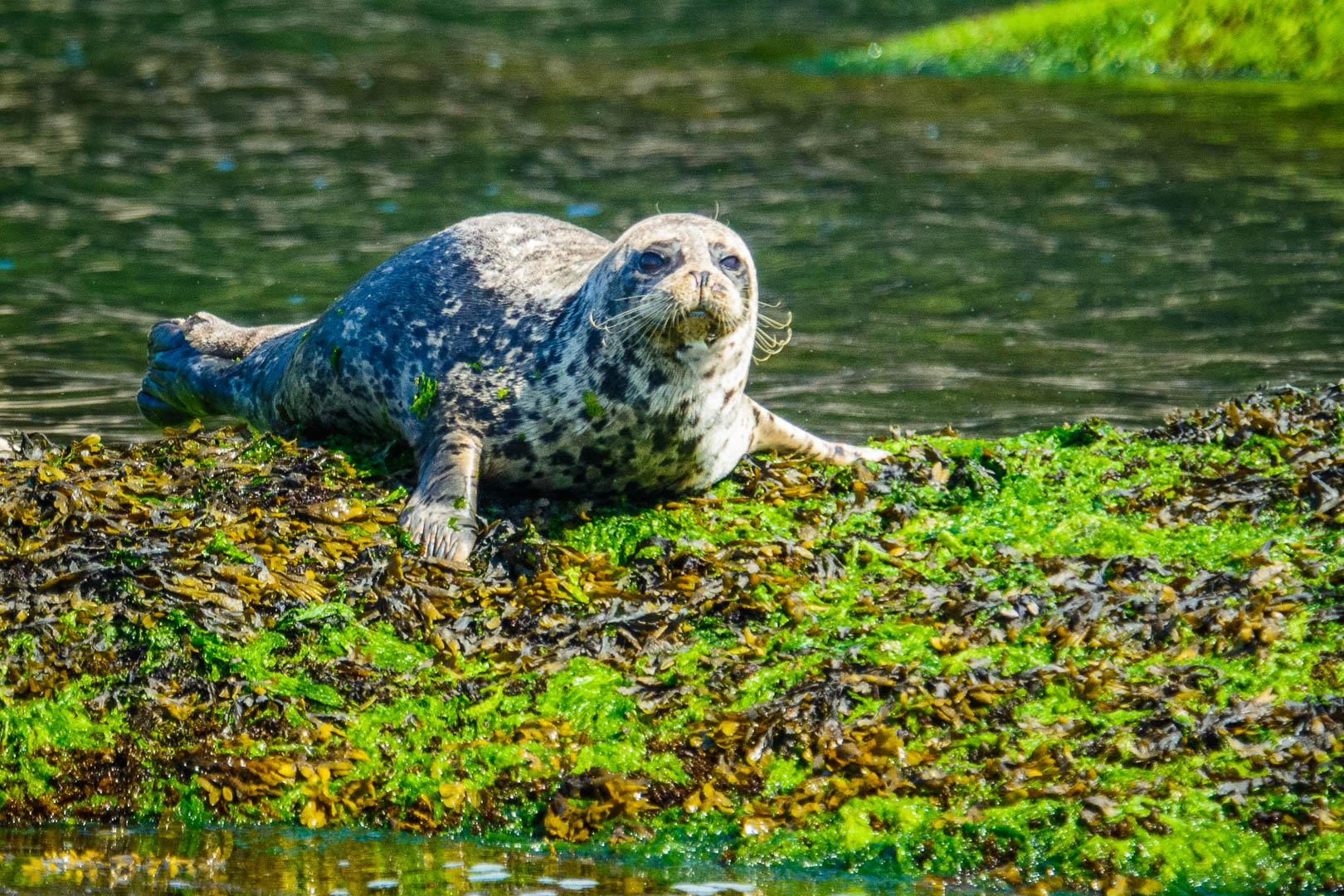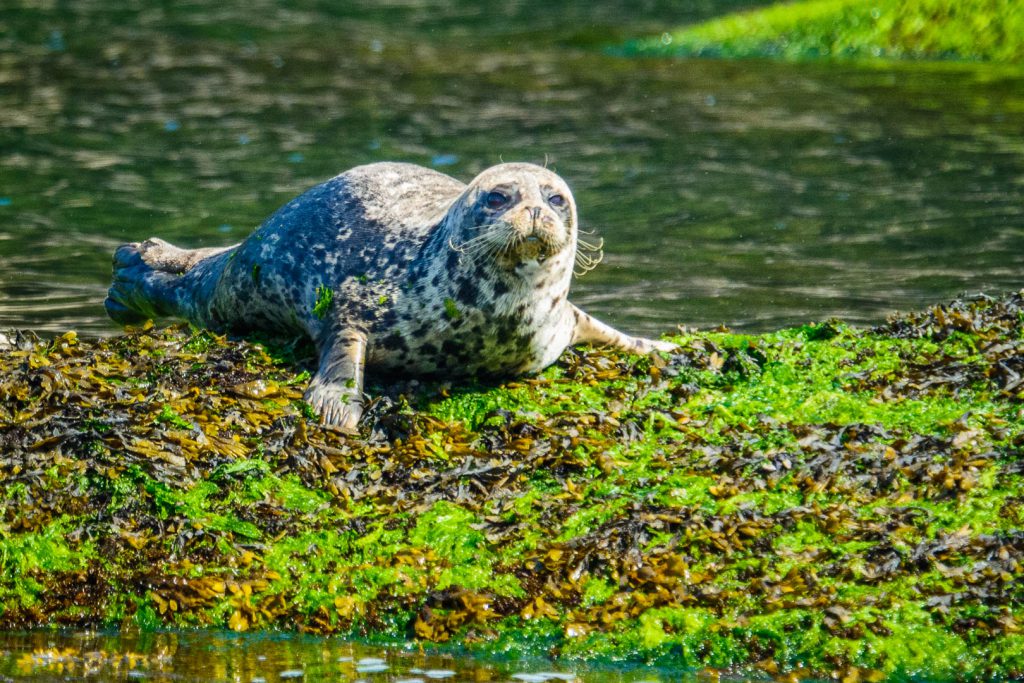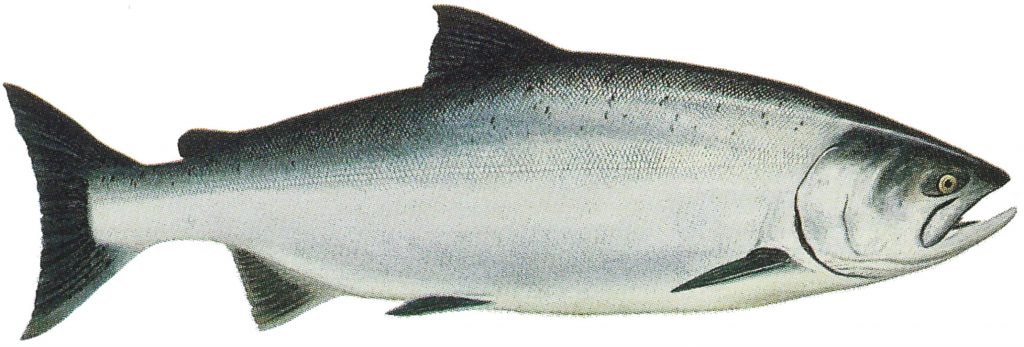
Is seal predation driving salmon declines in the Strait of Georgia?
To many people, the sight of a harbor seal feasting on a salmon is an iconic west coast moment. For thousands of years, harbor seals and Pacific salmon have coexisted in a complex relationship between predator and prey.

Yet some salmon populations in the Strait of Georgia have declined steadily amidst increased human activity, a changing ocean climate, and predatory pressure from marine mammals. One theory suggests that predation by harbor seals may be driving the salmon decline—but scientists have yet to find enough evidence to assign culpability.
A new study led by quantitative ecologist Benjamin Nelson (The University of British Columbia) sought to understand how predation by seals might impact the number of juvenile salmon from the Strait of Georgia that survive to adulthood and enter the fishery each year. The research was recently published in the Canadian Journal of Fisheries and Aquatic Sciences.
AN ECOSYSTEM VIEW
“People often see harbor seals eating adult salmon, but we wanted to know how many juvenile fish were being eaten,” says Nelson. “This is the point in the salmon’s life cycle that has been attributed to the recent declines in their populations.”

Following three years of analyzing seal diets, Nelson and colleagues concluded that in some areas of the Strait of Georgia, harbor seals are indeed eating a significant number of juvenile salmon each year. On the strength of this discovery, Nelson wanted to take an ecosystem view to see if the same trend extends elsewhere.
Using several decades of salmon population data, Nelson and colleagues constructed a statistical model of 20 populations of Chinook salmon in British Columbia and Washington State. They combined that with aerial survey data on harbor seal populations at the same times and places.
“We found that in 14 of the 20 salmon populations we studied, there was a strong association between the abundance of harbor seals and large declines in salmon productivity,” Nelson says. Surprisingly, he found no evidence of “local” effects in the Strait of Georgia, noting that the association between seal abundance and salmon productivity seemed to apply uniformly over the entire Salish Sea.
“People may believe harbor seals are a problem in certain areas with unique issues, but they don’t believe this is happening everywhere,” Nelson says. “Our results suggest this is a common theme among wild Chinook salmon populations. It’s happening not only on the inside waters of the Salish Sea, where seals are exploiting a degraded environment near urban areas, but also on the coastal areas of Washington State where relatively pristine habitat for salmon still exists.”
HATCHERIES RULED OUT
Nelson and colleagues also used their models to consider another potential factor in seal predation: salmon hatcheries.
“Since the 1970s, we’ve seen a lot more hatchery fish released into the system as wild stocks declined,” says Nelson. “Because of the sheer number of hatchery fish released into the ocean, it’s led to a lot of speculation that an overproduction of hatchery fish may have also influenced the wild decline as well. Could it not just be seals but also hatchery fish, or hatchery fish instead of seals, that are driving the declines in wild salmon?”
Upon investigating this hypothesis, Nelson and colleagues found no statistically significant negative association between hatchery productivity and wild productivity. Hatchery fish may be impacting wild fish on some level, he says, but the increases in hatchery productivity probably aren’t driving the declines in wild fish. He believes the seal populations have greater explanatory power in those declines.
“With all the alarm over the plight of killer whales and wanting to mitigate their risk of extinction, people are wondering whether we can use hatcheries to supplement their prey populations,” Nelson says. “If we did that what would the impact be on wild populations? Our models suggest that if we were to increase hatchery abundance, it probably wouldn’t significantly affect wild productivity.”
NO SMOKING GUN
With hatchery effects ruled out, Nelson is quick to point out that his study is a correlational analysis, not a “smoking gun” that incriminates seals in the decline of salmon stocks. While he acknowledges that conservation arguments can be polarizing in favor of one species or the other, he cautions against drawing conclusions about causation without evidence.
“Our study is one piece of evidence towards establishing causality between seal predation and salmon declines,” he says. “If this were a courtroom you couldn’t convict the seals, but you’d be looking at the evidence and be pretty suspicious about the seals at this point.”
“The novelty of this study is that — if there is a causal link between harbor seals and salmon — over how many areas could this be more widely occurring?” he says. “If there’s a causal link, it probably occurs over a very wide part of the ecosystem, which could explain declines in British Columbia, Washington State, and possibly beyond.”
 PUBLICATION
PUBLICATION
[webref_bio title=”Wild Chinook salmon productivity is negatively related to seal density, and not related to hatchery releases in the Pacific Northwest”]
